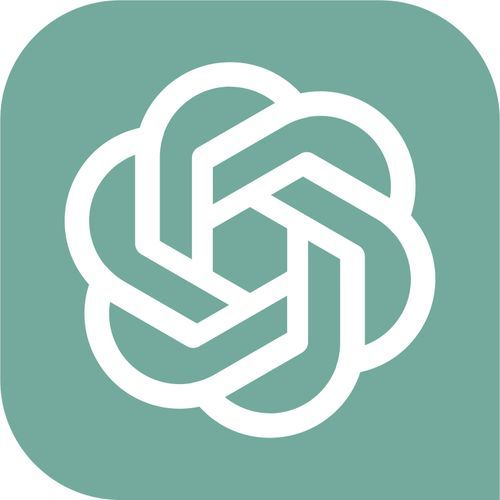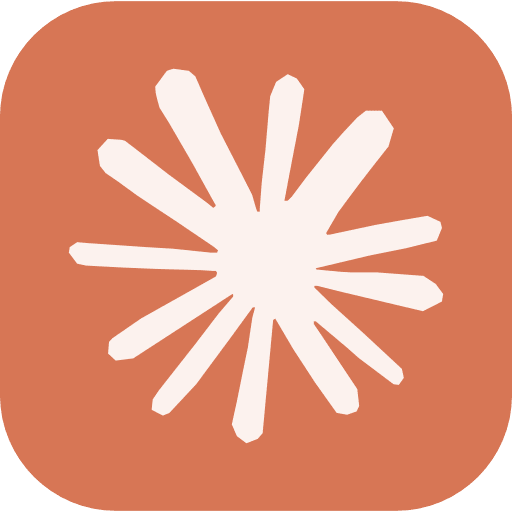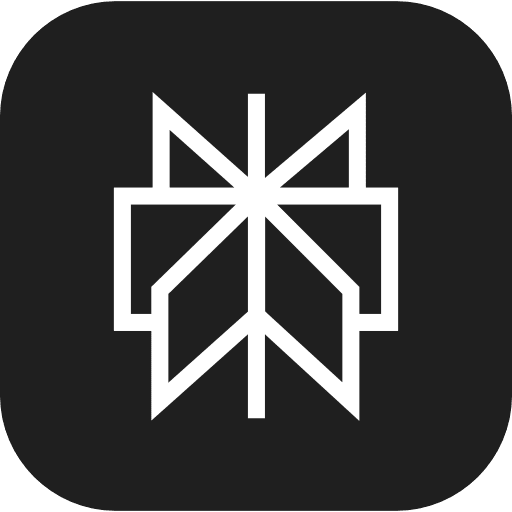Library of teambuilding games & icebreakers


Telephone
Many people might remember this game from their childhood. Commonly used as an exercise to get kids to enhance their listening skills, this simple yet effective game still works just as well in adulthood!
Telephone
Many people might remember this game from their childhood. Commonly used as an exercise to get kids to enhance their listening skills, this simple yet effective game still works just as well in adulthood!
How to play:
Gather everyone on your team and have them line up or sit in a big circle. There is a group leader who whispers a sentence into the first person’s ear. That next person whispers that same (hopefully) sentence into their neighbor's ear, and the game continues as such.
This is a perfect game for large teams, as not much is needed, and it’s more challenging to get the message across perfectly the more people it goes through.
Materials you’ll need: Just your team and space to the lineup, or sit in a circle.
How many people: Small to large teams (8-25+ people)
Gallery



Video


Jump over the imaginary ball
This is a warm-up game for many theater groups. It involves leaping over an imaginary ball. Everyone should stand in a circle and the leader will throw “the ball” to a participant. They jump over it and pretend that it rolls to another person for them to jump over. The game goes until everyone has had a chance to jump.
Jump over the imaginary ball
How to play Jump over the imaginary ball
This is a warm-up game for many theater groups. It involves leaping over an imaginary ball. Everyone should stand in a circle and the leader will throw “the ball” to a participant. They jump over it and pretend that it rolls to another person for them to jump over. The game goes until everyone has had a chance to jump.
Gallery



Video


Question mix and mingle
For this game, every participant creates 3 thoughtful questions that will help them get to know the other people better. Write each question down on a separate post-it note. Have everyone start to mingle and ask and answer questions in pairs. After asking a question and hearing the answer, the person should hand over the question they just asked. This means that in each meeting, participants will swap one question each. This event is great for groups up to 50 or 60 people.
Question mix and mingle
How to play Question mix and mingle
For this game, every participant creates 3 thoughtful questions that will help them get to know the other people better. Write each question down on a separate post-it note. Have everyone start to mingle and ask and answer questions in pairs. After asking a question and hearing the answer, the person should hand over the question they just asked. This means that in each meeting, participants will swap one question each. This event is great for groups up to 50 or 60 people.
Gallery



Video


‘Ruined paradise’ game
If you want to kick off your virtual team building event with some light-hearted fun, try this!After splitting the group into two teams, each team will be assigned a role. A member of team 1 will start by describing ‘paradise’ in one sentence, using only positive descriptions. Then, a member of team 2 will attempt to ‘ruin paradise’ with a negative sentence.
‘Ruined paradise’ game
If you want to kick off your virtual team building event with some light-hearted fun, try this!
How to play the ‘Ruined paradise’ game
After splitting the group into two teams, each team will be assigned a role. A member of team 1 will start by describing ‘paradise’ in one sentence, using only positive descriptions. Then, a member of team 2 will attempt to ‘ruin paradise’ with a negative sentence.
Play continues like this until everybody has added a sentence. A judge then determines which team has won by deciding whether ‘paradise’ has been ‘ruined’ or not.
Gallery



Video


Gift wrap
Gift wrapping is a true talent! See who on your team has this skill by tasking everyone with wrapping gifts in under a minute. You can either have several packages ready and see who gets the most wrapped, or pick containers that will be especially difficult to wrap and see how far each player gets in one minute. You might be surprised how difficult this can be. Remember that for this one everyone will need their own scissors, tape, wrapping paper, and area to spread out.
Gift wrap
How to play Gift wrap
Gift wrapping is a true talent! See who on your team has this skill by tasking everyone with wrapping gifts in under a minute. You can either have several packages ready and see who gets the most wrapped, or pick containers that will be especially difficult to wrap and see how far each player gets in one minute. You might be surprised how difficult this can be. Remember that for this one everyone will need their own scissors, tape, wrapping paper, and area to spread out.
Gallery



Video


Online (useless) talent show
Here’s a game that aims to draw out hidden talents among your teams. Ask each person in the next virtual meeting to showcase a talent they have. The only thing is, a lot of people might feel they have no hidden talents to show, so by calling it a ‘useless’ talent show, you might help reduce any pressure that is felt. Allow them to be as random and creative as they wish. Older talent videos from the 2000s had some creative gems, like the famous Daft Hands. Simplicity is key for a talent show, as well as an atmosphere of zero pressure, so give a (useless) talent show a shot in your next virtual happy hour.
Online (useless) talent show
How to play Online (useless) talent show
Here’s a game that aims to draw out hidden talents among your teams. Ask each person in the next virtual meeting to showcase a talent they have. The only thing is, a lot of people might feel they have no hidden talents to show, so by calling it a ‘useless’ talent show, you might help reduce any pressure that is felt.
Allow them to be as random and creative as they wish. Older talent videos from the 2000s had some creative gems, like the famous Daft Hands. Simplicity is key for a talent show, as well as an atmosphere of zero pressure, so give a (useless) talent show a shot in your next virtual happy hour.
Gallery



Video


Match quest
In match quest, everyone has the name of a famous pair (like “Batman” and “Robin”) stuck to their back, but they don’t know who they are. Players ask each other yes/no questions to figure out their identity and find their match. It’s a race to see who can complete their pair first!This game is perfect for encouraging interaction and getting people mingling. It’s a lighthearted, playful way to break the ice and get the team laughing together, making it ideal for building connections.
Match quest
In match quest, everyone has the name of a famous pair (like “Batman” and “Robin”) stuck to their back, but they don’t know who they are. Players ask each other yes/no questions to figure out their identity and find their match. It’s a race to see who can complete their pair first!
This game is perfect for encouraging interaction and getting people mingling. It’s a lighthearted, playful way to break the ice and get the team laughing together, making it ideal for building connections.
How to play:
- Write the names of famous pairs on cards and stick one to each player’s back.
- Players ask yes/no questions to figure out who they are.
- The goal is to find your match as quickly as possible.
Gallery



Video


Musical quiz
t can be hard to keep everyone engaged when managing virtual teams, so try this game using Spotify or Apple Music playlist with a musical quiz to get things lively. All you need to do is share your screen, with sound, and of course, hide the artist and song title. Begin a song and ask listeners to stick their guesses into the chat box, awarding a point to the first correct guess.You might want to narrow genres down to Pop music for more engagement, or you might have some real music aficionados in your teams. In that case, create a world music playlist and ask them to guess the country the song comes from! Get funky for your next virtual happy hour.
Musical quiz
How to play Musical quiz
It can be hard to keep everyone engaged when managing virtual teams, so try this game using Spotify or Apple Music playlist with a musical quiz to get things lively. All you need to do is share your screen, with sound, and of course, hide the artist and song title. Begin a song and ask listeners to stick their guesses into the chat box, awarding a point to the first correct guess.
You might want to narrow genres down to Pop music for more engagement, or you might have some real music aficionados in your teams. In that case, create a world music playlist and ask them to guess the country the song comes from! Get funky for your next virtual happy hour.
Gallery



Video


Minute to Win It Challenges
Prepare for the Minute to Win It Challenges, where lightning-fast antics and friendly rivalry collide. These challenges ignite creativity, force adaptability, and unveil hidden talents as team members scramble to conquer the clock.
Minute to Win It Challenges
How to play Minute to Win It Challenges
Instructions: Set up a series of minute-long challenges where participants must complete a task using everyday objects. Examples include stacking cups or moving cookies from the forehead to the mouth using only facial muscles.
Materials needed: Everyday objects (cups, cookies, etc.).
Prepare for the Minute to Win It Challenges, where lightning-fast antics and friendly rivalry collide. These challenges ignite creativity, force adaptability, and unveil hidden talents as team members scramble to conquer the clock.
Gallery



Video


Taboo
Next up is the game of “taboo”, a hilarious office game that is challenging and has the means necessary to improve the entire teams communication and creativity skills.
Taboo
Next up is the game of “taboo”, a hilarious office game that is challenging and has the means necessary to improve the entire teams communication and creativity skills.
How to play:
- Divide into teams and choose a team leader.
- The leader selects a card and tries to get their team to guess the word on the card without using any of the taboo words listed.
- The team earns a point for each correct guess.
- Rotate leaders and continue until each team member has had a turn.
- The team with the most points at the end of the game wins.
Playing Taboo in the office is a great way to foster collaboration and promote out-of-the-box thinking, while enjoying a few laughs and a break from the daily grind. Just be sure to keep the office-appropriate words flowing – we don't want any HR incidents on our watch!
Gallery



Video


Michelangelo
Provide teams with sculpting materials such as clay, Play-Doh, or modeling clay. Challenge them to create sculptures based on given themes or prompts, encouraging imaginative interpretations and creative expression. Select a judge to choose the best one to determine a winner.
Michelangelo
How to play:
Provide teams with sculpting materials such as clay, Play-Doh, or modeling clay. Challenge them to create sculptures based on given themes or prompts, encouraging imaginative interpretations and creative expression. Select a judge to choose the best one to determine a winner.
Example: The prompt says design a Simpsons character with play-doh (unintentional pun).
Materials needed: Sculpting materials (clay, Play-Doh, modeling clay)
Benefits:
- Tangible manifestation of creativity: Get ready to witness magic in action as your team members mold and shape their creative visions into physical forms. Their sculptures will be concrete proof of their incredible imagination, leaving everyone in awe and inspired.
- Celebration of individuality: Embrace the uniqueness and diversity of interpretations as each team member unveils their extraordinary sculpture. This game creates an environment that celebrates individuality and appreciates the creative expressions of others.
Gallery



Video


Safety charades showdown
Write down various safety scenarios on slips of paper (e.g., "using a fire extinguisher," "performing CPR") and place them in a hat. Divide employees into teams and have them take turns drawing a slip and acting out the scenario without speaking, while their team guesses what it is.Safety charades showdown adds a playful twist to learning important safety procedures. It encourages teamwork and creativity while reinforcing vital safety knowledge. Watching coworkers try to mime "emergency exit plan" is always entertaining.
Safety charades showdown
How to play:
Write down various safety scenarios on slips of paper (e.g., "using a fire extinguisher," "performing CPR") and place them in a hat. Divide employees into teams and have them take turns drawing a slip and acting out the scenario without speaking, while their team guesses what it is.
Safety charades showdown adds a playful twist to learning important safety procedures. It encourages teamwork and creativity while reinforcing vital safety knowledge. Watching coworkers try to mime "emergency exit plan" is always entertaining.
Gallery



Video


Invention-fest
A team that creates things together, stays together! Bring your group together to make something new. You can work as one large group but this is probably easier to facilitate if you break everyone up into smaller teams. Give people time to brainstorm ideas, and then come up with a workable prototype or model. This is a more in-depth activity that takes at least two days (one day for planning and one for bringing in supplies and building). A third day could be presenting the ideas and potentially having a panel judge the entries.
Invention-fest
How to play Invention-fest
A team that creates things together, stays together! Bring your group together to make something new. You can work as one large group but this is probably easier to facilitate if you break everyone up into smaller teams. Give people time to brainstorm ideas, and then come up with a workable prototype or model. This is a more in-depth activity that takes at least two days (one day for planning and one for bringing in supplies and building). A third day could be presenting the ideas and potentially having a panel judge the entries.
Gallery



Video


Kiss, Marry, Kill
Looking for a quick and funny way to start a meeting? Try Kiss Marry Kill. A perennial crowd-pleaser, this question game involves choosing which of three people you’d rather kiss, marry, or – you guessed it – kill. They can be fictional (e.g. characters from well-known movies) or real (e.g. singers, sports stars, or people in the office) and you take turns presenting three names for the other players to choose from. Expect light-hearted debate to rage as each participant justifies who they’re kissing, marrying, or killing! If you want to make this game slightly more PC, then consider the alternative: “Kiss, Marry, Avoid.” The process is the same, just with slightly less offensive language.
Kiss, Marry, Kill
How to play Kiss, Marry, Kill
Looking for a quick and funny way to start a meeting? Try Kiss Marry Kill. A perennial crowd-pleaser, this question game involves choosing which of three people you’d rather kiss, marry, or – you guessed it – kill.
They can be fictional (e.g. characters from well-known movies) or real (e.g. singers, sports stars, or people in the office) and you take turns presenting three names for the other players to choose from. Expect light-hearted debate to rage as each participant justifies who they’re kissing, marrying, or killing!
If you want to make this game slightly more PC, then consider the alternative: “Kiss, Marry, Avoid.” The process is the same, just with slightly less offensive language.
Gallery



Video


Habitica
Not something that can be played as a group, but something that can really help with setting goals. Habitica is an online platform and mobile app that gamifies goal-setting and task management. It transforms your goals and habits into a role-playing game where you create a character, set goals, and earn rewards for completing tasks. In this game, you begin by crafting a character to embody you. Input your tasks, habits, and daily goals, each linked to a specific achievement. Successfully completing these earns in-game rewards, like experience points and virtual currency, allowing your character to level up, unlock new features, and face challenges. Neglecting tasks or failing incurs consequences for your in-game character. This game shows the person first-hand what it’s like to set a clear goal and how it feels to reap the rewards. It also shows the person that not meeting your goal will result in consequences. In theory, this can be then applied in real-life work! Top Tip: Set this as homework for all the group!
Habitica
Not something that can be played as a group, but something that can really help with setting goals. Habitica is an online platform and mobile app that gamifies goal-setting and task management. It transforms your goals and habits into a role-playing game where you create a character, set goals, and earn rewards for completing tasks.
In this game, you begin by crafting a character to embody you. Input your tasks, habits, and daily goals, each linked to a specific achievement. Successfully completing these earns in-game rewards, like experience points and virtual currency, allowing your character to level up, unlock new features, and face challenges. Neglecting tasks or failing incurs consequences for your in-game character.
This game shows the person first-hand what it’s like to set a clear goal and how it feels to reap the rewards. It also shows the person that not meeting your goal will result in consequences. In theory, this can be then applied in real-life work!
Top Tip: Set this as homework for all the group!
Gallery



Video


The Communication Game
Inspired by the classic game “Telephone,” The Communication Game requires players to accurately pass a physical message from one end of the line to the other.
The Communication Game
Inspired by the classic game “Telephone,” The Communication Game requires players to accurately pass a physical message from one end of the line to the other.
Great for: Communication, observation skills
Duration: 10 minutes
Players: 6+
You’ll need: Nothing
How to play The Communication Game
Setup: Ask your group to stand in a single-file line, about arm’s reach apart, facing in the same direction.
To play: Ask the person at the back of the line to come up with a short movement sequence. Once they’ve created the sequence, they tap the shoulder of the person in front of them, asking them to turn around. The player turns around and observes the movement sequence. Then, they turn around, tap the shoulder of the player in front of them and perform the same sequence. This pattern continues until the movement sequence reaches the person at the front of the line. Hopefully, the sequence will be somewhat preserved!
Gallery



Video


Pass the bomb
Pass The Bomb is a fast-paced family word game that’s great for work teams too. The box contains two decks of cards, a dice and a ticking time bomb. The aim of the game is to create words with the letters shown on the cards. Most cards have only 3 letters.
Pass the bomb
How to play Pass the bomb
Pass The Bomb is a fast-paced family word game that’s great for work teams too. The box contains two decks of cards, a dice and a ticking time bomb. The aim of the game is to create words with the letters shown on the cards. Most cards have only 3 letters.
Rolling the dice can land on “TICK,” “TICK TACK,” or a BOMB symbol.
- TICK means letters can’t be used at the start of a word.
- TICK TACK means your letters can be used anywhere within the word.
- The BOMB symbol means letters can’t be used at the end of the word.
So turn over your letter card, turn on the bomb, and start the game! Remember; pass the bomb, don’t throw it! (gunpowder not included)
Gallery



Video


Bingo blitz
Bingo blitz turns your workday into a game by creating Bingo cards filled with everyday office tasks or events—like “send an email,” “have a meeting,” or “drink a coffee.” As these things happen, players mark off their Bingo cards. First person to get a full row or column wins!It’s a simple, fun way to make the office day a little more engaging and adds a bit of light competition to the regular routine.
Bingo blitz
Bingo blitz turns your workday into a game by creating Bingo cards filled with everyday office tasks or events—like “send an email,” “have a meeting,” or “drink a coffee.” As these things happen, players mark off their Bingo cards. First person to get a full row or column wins!
It’s a simple, fun way to make the office day a little more engaging and adds a bit of light competition to the regular routine.
How to play:
- Create Bingo cards with common office tasks or events.
- Players mark off tasks as they happen during the workday.
- The first person to get a full row or column shouts "Bingo!" and wins!
Gallery



Video


The four quadrants
This team-building activity allows individuals to express themselves playfully and creatively. It’s an excellent game for helping team members get to know one another more intimately. It would be well suited for an onboarding exercise or bringing together teams that typically work remotely.
The four quadrants
This team-building activity allows individuals to express themselves playfully and creatively. It’s an excellent game for helping team members get to know one another more intimately. It would be well suited for an onboarding exercise or bringing together teams that typically work remotely.
How to play:
Split up into small teams and give each participant a piece of paper and drawing materials. Have them fold their paper into four sections and spend five to ten minutes drawing their responses to four questions. Questions can be personal or related to a workplace topic, such as “What do I expect from my team” or “What do I see in my professional future.”
After players finish drawing their responses, have them regroup with their team and discuss their visual answers.
Materials you’ll need: Paper and makers, general art supplies. Tables and chairs for drawing surfaces
How many people: Small to large teams (8-25+ people)
Gallery



Video


Group story-telling
This game is great for better understanding how your coworkers' minds work. What better way to bond than to create something together - in this case, a story. You can do this with any number in your group. Plus, you can play this game as many times as you want, and the outcome will be different each time.
Group story-telling
This game is great for better understanding how your coworkers' minds work. What better way to bond than to create something together - in this case, a story. You can do this with any number in your group. Plus, you can play this game as many times as you want, and the outcome will be different each time.
Here’s how it works.
- Have everyone stand in a circle or semicircle where the entire group can get a good look at each other.
- The person who is running the event should decide on a story topic. You can pick anything, but be sure to use your imagination. Something like the middle ages to underwater adventures adds an element of fun (vs. a typical day at work or something more mundane). The more creative you can be, the better it will be for the group.
- Choose a person to kick things off with a few sentences. Then, they “pass” to the next person to continue the story.
- The passing continues until everyone has had an opportunity to add to the story. A few lines are sufficient, but encourage people to be creative.
- The last person to go should wrap up the overall story. It’s a good idea to let them know in advance that this will be their responsibility so they can think of a clever ending.
Gallery



Video


Growing sentence
In this game, everyone in the room contributes one word to a growing sentence. You can have everyone stand in a group or in a line, as long as everyone can hear each other properly. Pick one word to begin the sentence and have everyone add one more word to keep the sentence going. Have someone write it down on paper or a chalkboard so you can all get a laugh at the final result.
Growing sentence
How to play Growing sentence
In this game, everyone in the room contributes one word to a growing sentence. You can have everyone stand in a group or in a line, as long as everyone can hear each other properly. Pick one word to begin the sentence and have everyone add one more word to keep the sentence going. Have someone write it down on paper or a chalkboard so you can all get a laugh at the final result.
Gallery



Video


Background noise
Background noise can be a common challenge if you work in an office or go to your desk in the living room daily. This game relies on an everyday challenge, asking players to listen with intention and remain calm, even if the environment is overwhelming.
Background noise
Background noise can be a common challenge if you work in an office or go to your desk in the living room daily. This game relies on an everyday challenge, asking players to listen with intention and remain calm, even if the environment is overwhelming.
How to play:
Pick two people from your team to be the “speaker” and the “noise maker.” The person in charge of making noise is as loud as possible while others usually talk.
Team members listen carefully to try and retain as much information as possible. Many suggest that other team members close their eyes to try to hear as much as possible without visual distractions or prompts.
Materials you’ll need: No materials needed, just your team!
How many people: Small to mid-sized teams (8-16 people)
Gallery



Video


Tree or Bob Ross?
This game is a bit random but great fun. Each player takes a turn thinking of a specific ‘thing’.The other players must then figure out what that ‘thing’ is by asking comparative questions like, “Is it more like… or…?” Traditionally, the first question is always, “Is it more like a tree, or Bob Ross?” Play continues with similar comparative questions until the guessing team has successfully identified the ‘thing’.
Tree or Bob Ross?
This game is a bit random but great fun. Each player takes a turn thinking of a specific ‘thing’.
How to play Tree or Bob Ross?
The other players must then figure out what that ‘thing’ is by asking comparative questions like, “Is it more like… or…?” Traditionally, the first question is always, “Is it more like a tree, or Bob Ross?” Play continues with similar comparative questions until the guessing team has successfully identified the ‘thing’.
Gallery



Video


Personal User Manuals
Tight-knit teams need to understand how their colleagues like to work. Who likes to work in silence and who likes to exchange ideas? Who likes to take phone calls and who prefers emails? By creating Personal User Manuals, new and existing employees gain a deeper understanding of their peer’s workplace preferences.
Personal User Manuals
Tight-knit teams need to understand how their colleagues like to work. Who likes to work in silence and who likes to exchange ideas? Who likes to take phone calls and who prefers emails? By creating Personal User Manuals, new and existing employees gain a deeper understanding of their peer’s workplace preferences.
Great for: Onboarding, company culture
Duration: 5 minutes
Players: 4-15
You’ll need: Nothing
How to play Personal User Manuals
Setup: No setup required.
To play: Ask your employees to record a short video of themselves that can be used as a Personal User Manual. In the video, the employee should introduce themselves, tell an interesting fact and discuss their workplace preferences. Once everybody has recorded a video, you can upload them to your company intranet or knowledge hub.
Gallery



Video

















